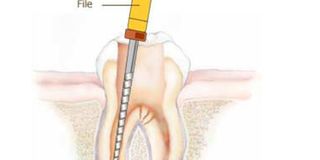Root canals: What you need to know

A molar tooth covered in a sealant. Using a sealant protects against decay and damage.
Root canal treatment was not a common treatment but suddenly many people have either gone through it or have heard about it. When people are told that they need a root canal treatment, they usually think about pain. However, the pain they feel is caused by an infection in the tooth, not by root canal treatment.
A root canal procedure is done to eliminate that pain. The root canal itself is painless but many people may be afraid to have a root canal just because they are anxious about having dental work done.
The whole point of root canal therapy is to try to save a tooth, not to remove it. Your tooth and roots are not removed. The nerve tissue and pulp are removed along with some of the inside part of the root to ensure all the bacteria have been removed.
Can it really save your tooth?
Many people believe once they have had root canal treatment, they will no longer feel pain in the treated tooth. This, however is incorrect, the tooth will not be sensitive to hot or cold foods and beverages for a few days. After a few days after treatment, the area around the tooth can be sensitive. If this happens to you, your dentist can prescribe medicine to reduce inflammation.
It is not right to assume that the treated tooth will eventually need to be extracted. In fact, most root canal treatments are successful and result in the tooth being saved.
When do you need it?
Many teeth that need root canal therapy will not cause pain, but that does not mean the tooth is okay. Your dentist has ways to see if the tooth’s pulp is damaged or infected. If it is, then you will need root canal therapy, even if the tooth doesn’t hurt. If you see something near a damaged tooth that looks like a pimple, it means there is infection and you need to see a dentist immediately. The infection must be treated, and the tooth probably needs root canal therapy. You should note that without treatment, the nearby tissues may be damaged.
Key points to note
Once you have received root canal therapy, you will need to make follow up appointments to have a permanent filling or crown put on the tooth. The temporary filling that is placed after the pulp has been removed will protect the root from infection for only a short time. A permanent filling or crown must be placed to ensure that bacteria doesn’t leak into the canal.
The writer is a dentist




